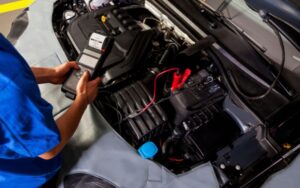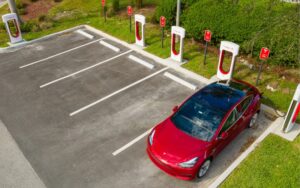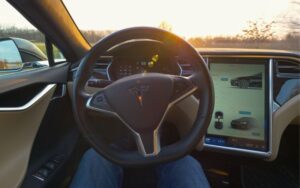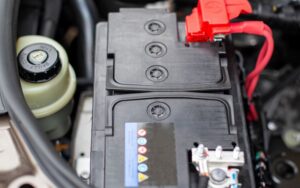Tesla Batteries Recyclable: From Drive to Revive!
Last updated on September 21st, 2023 at 09:41 am
Electric vehicles like Tesla are very eco-friendly and produce zero carbon emissions.
Before widespread EV adaptation, many battery manufacturers did not recycle waste batteries. Companies threw waste batteries into landfills where they leached dangerous heavy metals.
Big companies in the electric vehicle market have had a lot of allegations accusing them of dumping spent batteries in landfills and not recycling them.
So, you may wonder whether Tesla recycles batteries.
Tesla has distinguished itself as one of the few EV manufacturers that recycle 100 percent of their waste batteries. Tesla uses hundreds of cells in a battery bank that can be disassembled and recycled easily by either pyrometallurgy or hydrometallurgy. Redwood is Tesla’s main contractor that recycles their waste batteries, and they can recover up to 95% of valuable materials.
In this article, I will list and explain how Tesla recycles EV batteries, how to recycle yours, and clear up the various myths and misconceptions concerning EV battery recycling.
Can Car Batteries be Recycled?
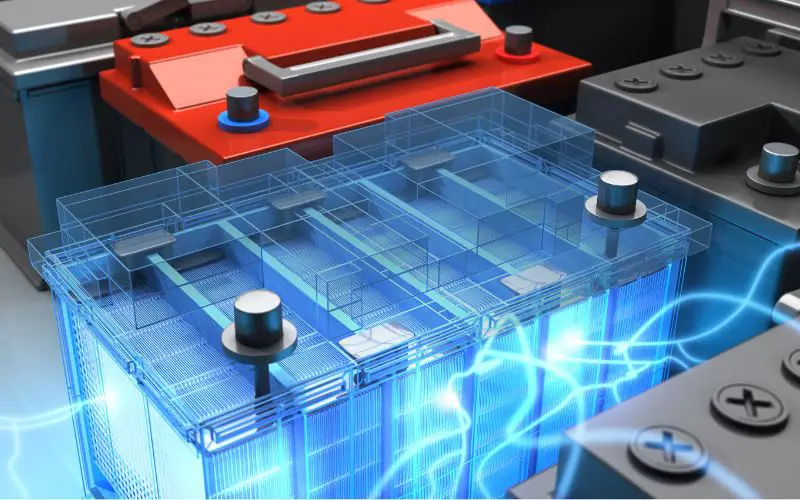
Yes, you can recycle Tesla Batteries. Electric vehicle batteries cannot be disposed of in landfills or burnt because of their scarcity and toxicity, so they need recycling.
EV battery recycling is a delicate process that needs to be done with great care and by approved recycling centers.
Do not attempt to repair or replace your EV battery by yourself. Replacing your EV battery might void your warranty.
Below is a list of places that offer Tesla battery pack replacement and recycling services.
#1. Tesla Service Center
The first place you should take your Tesla for battery replacement is an official Tesla repair shop or service center.
If your Tesla battery is still under the warranty period, you can get it replaced for free at a service center.
They also perform repairs and maintenance on your battery. Battery replacement is expensive, so getting a repair is better than replacing the entire battery.
#2. Tesla focused Dealerships
Another place that can recycle your Tesla battery pack is Tesla dealerships.
Some dealerships are subsidiaries of Tesla and have clearance to change your Tesla battery without voiding your warranty.
Such dealerships have channels to trade in your old battery for a new one under insurance or a fine and can recycle the old one.
#3. Third-Party Service Centers
If your Tesla is not under warranty, you can opt for battery pack replacement and recycling with Third party service centers.
Third-party service centers are mostly mechanics focusing on internal combustion vehicles, so you should be careful before hiring them to recycle your Tesla battery.
So, ensure the service mechanic has sufficient skill working on EVs and can replace Tesla battery packs.
Does Tesla Recycle All its Batteries?
Yes, Tesla recycles all the replaced battery cells in their electric vehicles. The materials used to make batteries are hard to come by and too valuable to be thrown away, so they are recycled.
Cobalt, lithium, and nickel are some materials you can recover from recycling lithium-ion batteries.
Tesla offers battery replacement warranty for their various models. The warranty varies from model to model.
Here is a table identifying the warranty replacement period of Tesla models and the cost of an out-of-warranty replacement.
| Model | Battery Replacement Cost | Warranty period(Miles/years) |
|---|---|---|
| Model 3 | $13,000 | 100,000 miles/8 years |
| Model X | $14,000 | 150,000 miles/8 years |
| Model Y | $5,500 | 120,000 miles/8 years |
| Model S | $20,000 | 150,000 miles/ 8 years |
Tesla battery packs have an eight-year warranty or less than 150,000 miles of driving. If you take long trips regularly, you can exhaust your warranty quickly.
Thankfully, Tesla batteries have up to 1500 charge cycles, so you can expect them to last for more than ten years before needing replacement under heavy usage.
Are Tesla Batteries 100 Percent Recycled?
All waste Tesla batteries are 100 percent recycled, but only lithium, cobalt, and nickel elements are 100 percent recycled.
Other materials in the batteries that are not recyclable are lost. The battery’s adhesive, plastic, and sealants cannot be recycled.
Tesla’s partner Redwood takes on the responsibility of recycling Tesla batteries. Redwood claims they can recycle up to 95 percent of the material in Tesla lithium-ion batteries.
You can rest assured that your old Tesla battery pack will not end up in a landfill, contaminating the soil.
Most of the time, when people hear that Tesla batteries cannot be 100 percent recycled, they get skeptical, but they fail to consider that few things are 100 percent recyclable.
Presently there are a few problems that make high-yield lithium battery recycling difficult.
Below are the reasons Tesla batteries cannot be 100 percent recycled.
#1. Lithium Batteries’ Elements
Tesla uses lithium-ion batteries. Lithium is a metal mined from salt deposits in Australia, China, and Chile.
Lithium batteries comprise rare and sometimes toxic elements like cobalt, manganese, and nickel.
Recyclers must use multiple processes to separate the different battery elements to recycle them.
Such processes are quite expensive and time-consuming, so lithium battery recycling has only recently picked up.
There might be losses of a few percent of the valuable materials, but it is way better than dumping used batteries in landfills where they can become a hazard to the environment.
Losses like this are why no lithium batteries are 100 percent recyclable.
#2. Material Constraints
Lithium-ion batteries are not just lithium metal; they contain nigh impossible-to-recycle materials like adhesives and sealants that recycling cannot recover.
There are two main processes for recycling lithium-ion batteries. They are:
- Pyrometallurgy
- Hydrometallurgy
Pyrometallurgy uses the standard process of extracting metal from ores by grinding and heating them until they melt.
The spent cells get broken into smaller pieces, separating the metal from the battery adhesive and sealants.
They melt the mass, and the precious lithium is extracted and recycled. Sadly pyrometallurgy has a low recovery rate, and much of the metal is lost.
On the other hand, hydrometallurgy uses chemicals and acids to dissolve the cells and break them into component elements making recovery easy.
Sadly, hydrometallurgy is more expensive than pyrometallurgy, and the waste chemicals pollute rivers and the soil.
Material constraints like this make recycling 100 percent of waste batteries impractical.
#3. Financial Feasibility
Tesla batteries are not easy to recycle because they require a lot of investment to build factories capable of recycling lithium.
Apart from Tesla and others, few lithium battery manufacturers recycle spent cells.
The cost of setting up factories is one of the major hurdles preventing the widespread and total adoption of lithium recycling.
Small recycling facilities can only recycle cobalt and some lithium metal from spent cells and must invest a lot of money to increase recycling yields.
Thankfully, the scarcity of lithium metal in the earth’s crust and the demand for electric vehicles have increased the drive for lithium battery recycling.
Are 18650 Batteries Used in Tesla Vehicles?
Tesla’s usage of 18650 batteries in their vehicles is well-known. These high-energy density lithium-ion batteries provide the necessary power for Tesla’s electric cars, and their cylindrical shape allows for efficient packaging within the vehicle’s battery pack. Tesla’s choice of 18650 batteries aligns with their commitment to utilizing advanced and reliable technology in their pursuit of sustainable transportation.
Do Tesla Batteries End up in Landfills?
Tesla is a major car manufacturer that recycles its spent battery packs. So Tesla batteries aren’t dumped in landfills.
Lithium-ion cells are volatile and can leach many toxic materials into the soil and groundwater, so many measures are being taken to prevent disposal in landfills.
Landfills are only suited for non-toxic and biodegradable/non-biodegradable materials. Lithium is toxic and is too valuable to be thrown away in landfills.
Recycling is one of the safer and more environmentally friendly ways to dispose of waste Tesla batteries.
Tesla has some of the most advanced lithium battery recycling facilities, and they employ various measures to keep batteries out of landfills.
Here are some of the ways Tesla deals with waste batteries.
#1. Repairing
Tesla attempts repairs on battery packs sent to them before exploring other options like power grid support and recycling.
If one or more cells fail in a Tesla battery pack, the car battery controller automatically cuts power to and from the affected battery pack.
Since the battery controller cannot isolate a faulty cell, it must deactivate entire rows or a pack for safety reasons.
Problems like this can drastically reduce the effective range of the Tesla and make it seem like the entire battery pack is bad, whereas just a few cells are responsible.
Battery packs sent to Tesla get stripped, individual cells tested, and underperforming or bad cells are removed and replaced.
If the pack is back to full health, it gets installed back into the vehicle; if not, it gets repurposed as an energy storage bank or recycled.
#2. Power Grid Support
Before battery recycling, the packs get checked for damage, and the amount of charge they can hold is measured.
A battery pack might not be able to store power for long distances, but it might still be enough for other less power-intensive activities.
So underperforming Tesla batteries can get a second life as power Grid energy banks.
Energy producers in the US use massive battery banks to store energy during lower demand periods, and the battery banks feed electricity back into the grid during periods of high demand.
Battery recycling is the last resort for Tesla batteries as it can waste an otherwise good battery pack by recycling.
#3. Recycling
Unlike what some people might want you to think, Tesla batteries do not end up in landfills.
The lithium and other rare elements in lithium batteries are way too valuable and dangerous to be thrown in landfills.
EV batteries must be recycled because even underperforming cells can combust and release dangerous gasses that are difficult to put out with water.
There are a lot of companies and EV start-ups that focus on lithium battery recycling, and Redwood is one of them. Redwood recycles as high as 95 percent of lithium batteries.
From the above, you can see that there is little waste in the lifespan of a lithium battery, and the entire process is a loop from production, decommissioning, recycling, and back to production.

Hey, I’m Michael Davis, a 35-year-old with a degree and a love for cars and tech. Since I was a kid, cars have been my thing—so much that I even thought they ran on magic beans! Fast forward, and I’ve built Vehicle Army, your one-stop-shop for easy-to-understand car facts.

